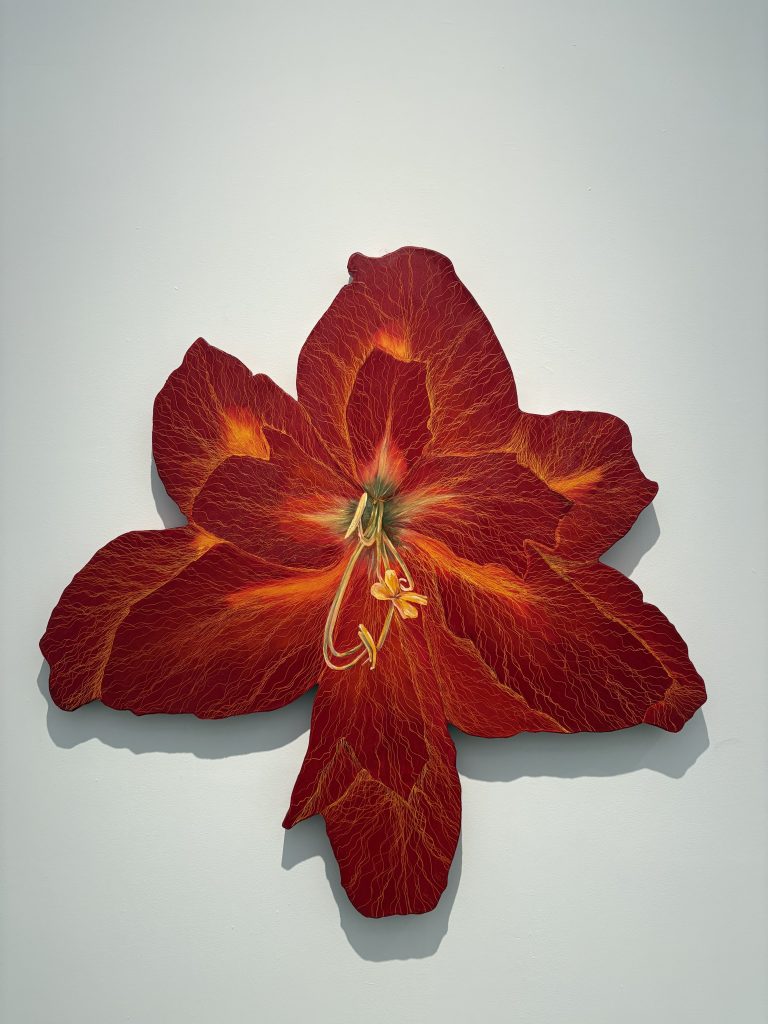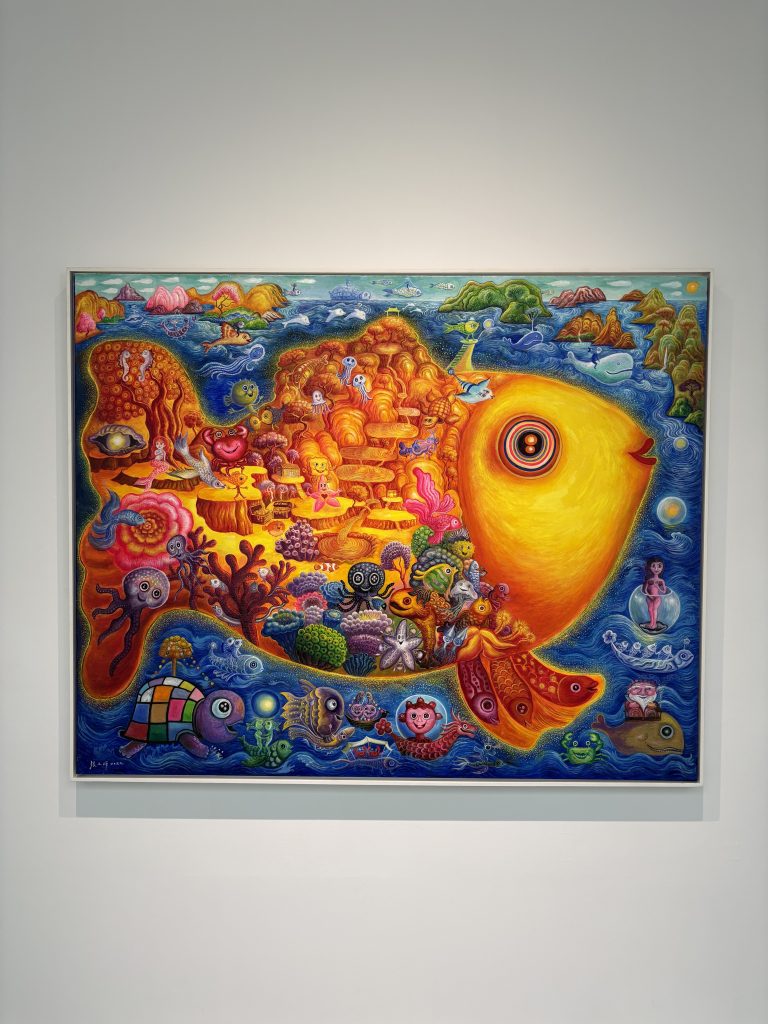The main activity this Thursday was visiting the Kaohsiung Museum of Fine Arts. Although I am not very familiar with high-quality art, I could appreciate many pieces of artwork in the museum. I really enjoyed the top floor of the museum, where one artist had a collection of oil paintings. These paintings used bright colors to create an almost glowing effect. I have also included one of my favorite paintings below, which was a flower that appears to look 3D. I am shocked at how realistic it looks.
After my first walkthrough of the museum, I missed a very interesting exhibit that I am really glad Professor Young pointed out to me. It was the visiting exhibit toward the back of the first floor of the museum that followed a Buddhist Monk meditating. There were videos of the Monk walking through crowded streets at an extremely slow pace. This contrast between the pace of the Monk walking and his surroundings was very drastic, and shows the comparison between the pace it takes to slow down the mind and body and reflect, compared with the pace of everyday life and how rushed society has become.
Later when talking with Professor Young, he told me about Xuangzang , the most famous monk in Chinese history. Xuangzang embarked on a 16 year journey on foot from China to India collecting famous scriptures and learning different religious teachings. When I first heard this, I could hardly believe it because I can’t imagine the dedication and mental strength it would take to embark on a journey of that length.
Both the exhibit of the Buddhist monk and learning about Xuangzang made me consider how society has become more fast paced, and how we don’t take time to reflect and meditate on our actions and the world around us. For many people, taking 16 years to walk somewhere, or to even just walk on a crowded street at a slow pace would be very challenging. Even thinking about walking slowly on a crowded street makes me anxious, and demonstrates how much society has evolved. If I had to make a guess for why society has evolved this way, I would attribute it to manufacturing and our capitalistic society. After the Industrial Revolution, when manufacturing became much more precise, it brought an entire different meaning to time. If workers were late to start the machines, it would result in lost profit. This is where values of precision and being exactly on time became heightened.
I think the concept of ‘slowing down’ for people today is also particularly challenging because of the digital age in which we live. Living in a digitized world, we have to wait very little time for anything. We have the benefits of instant gratification, but at the same time, it has dwindled our patience.
This push toward speed and efficiency has completely shaped how we move through the world and makes me consider what we lose when we stop taking the time to slow down, reflect, and deliberately experience the present.

